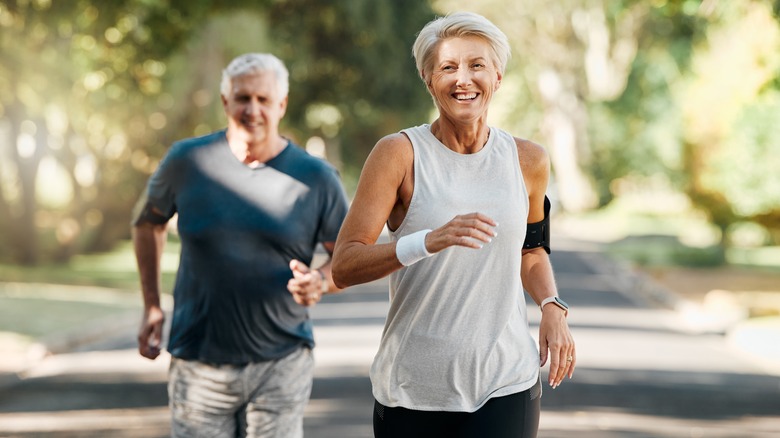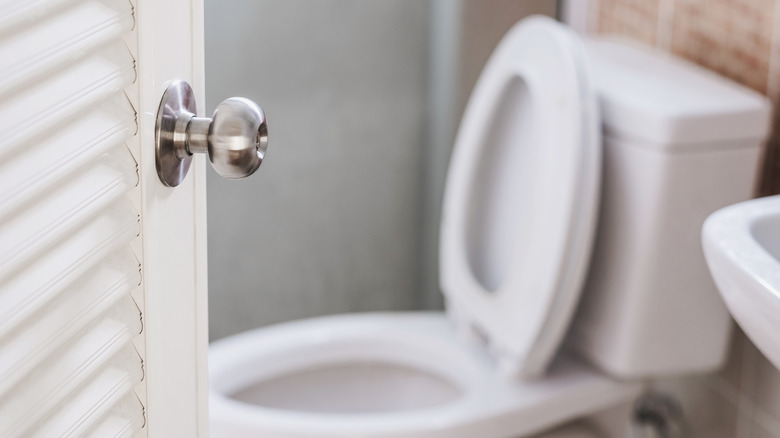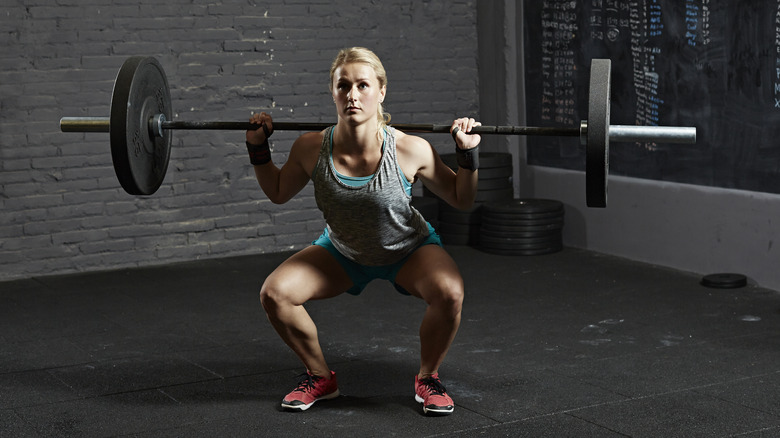What It Means When The Urge To Pee Won't Go Away During A Workout
Getting to the gym is hard enough as it is, but sometimes other factors work against you during your workout too. You get your mind ready, you drink your pre-workout shake to prepare your body, and you empty your bladder so it won't interfere. But often it still does. That urge to pee can return just as you're really getting into the zone, and it just won't go away.
Maybe you drank a little too much water or caffeine before your workout to set your bladder in active mode. Once your heart gets pumping, other parts of your body become active as well, according to Everyday Health. Your kidneys could begin producing more urine, which can be inconvenient when you're trying to get in a good sweat sesh.
Being dehydrated at the start of your workout can also create the urge to pee. It might not make sense, but your body holds onto the water it has, so it feels like you need to go. Your urge to pee could also be attributed to an overactive bladder or athletic incontinence, both of which can be partially resolved by maintaining a healthy pelvic floor.
An overactive bladder could increase your urge to pee
An overactive bladder affects an estimated 30% of men and 40% of women, according to the Urology Care Foundation. A key symptom is a sudden and urgent need to pee, and sometimes sufferers will even leak a little urine too. When a typical bladder gets filled with urine, your brain sends you the signal to begin searching for a bathroom. You can probably wait until you get home or until the end of the movie. An overactive bladder may not be full before it sends an urgent message to find a bathroom ASAP.
You might also feel symptoms of an overactive bladder if your bladder muscles are active and don't relax after you've emptied it. St. Pete Urology notes that low-impact exercises can be beneficial to managing OAB but running and other high-impact workouts could get your bladder going. If your urge to pee during these exercises makes you uncomfortable, it might be better to stick to something like swimming or cycling. Strengthening your pelvic floor with Kegel exercises can also help you control any incontinence.
Athletic incontinence could cause leaking
Having a light leak of the bladder during a workout is pretty common, with as many as 36% of female athletes dealing with this issue, per the Montreal Gazette — especially with high-impact workouts like running. Physical therapists who deal with the pelvic floor acknowledge that their patients will often give up exercising because of the problem, or they opt for a low-impact workout that doesn't aggravate their incontinence.
Your pelvic floor has muscles, ligaments, and other tissues that support your organs. When your pelvic floor weakens, urine leaks because the bladder can't completely close. The pelvic floor also closes the urinary and anal sphincters. Plenty of factors weaken your pelvic floor, including childbirth and menopause, but endurance athletes often have an overworked pelvic floor from an extended downward strain of the muscles.
According to the Continence Foundation of Australia, men who've had issues with their prostate could experience incontinence from a weak pelvic floor. Your pelvic floor can also be weakened if you're overweight or constipated. Lifting heavy weights can also stress the muscles and tissues of the pelvic floor. However, contracting your pelvic floor just before you do a rep of weight lifting will help strengthen those muscles over time.



